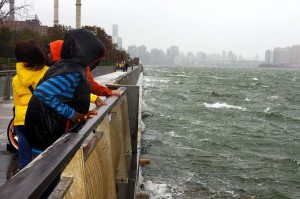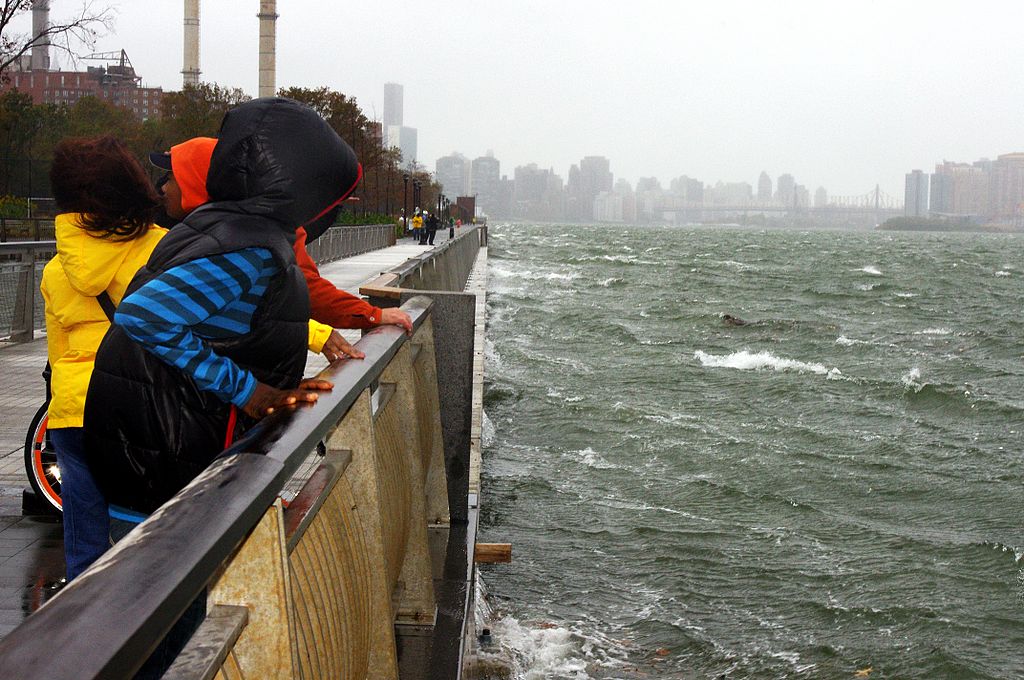New York Governor Andrew Cuomo’s recently proposed buyback plan for homes devastated by Hurricane Sandy is an important step towards a more sustainable America. Offering to purchase coastal dwellers’ homes for their pre-storm value (with bonuses for those relocating in their home county and in areas of extreme risk), the plan signifies a potentially major legislative commitment to an idea that scientists and climate activists have, for years, been espousing: “There are some parcels [of land] that Mother Nature owns.”

(by David Shankbone)
Here’s how the plan works: New York would purchase 10,000 homes on its coast, demolish them, and let the properties gradually become wetlands never to be developed again. In accordance with the severity of the issue, this plan is expensive. Cuomo is asking for approximately $400 million from the federal government, which he hopes to get from $51 billion Congressional emergency aid package meant for states ravaged by Sandy. But what makes Cuomo’s plan significantly better than the unsustainable barriers others have considered is his plan’s use of natural processes that humans cannot come close to supplanting.
Wetlands, along with other natural features like barrier islands, serve as buffers that protect mainland America from utter devastation caused by storms like Sandy. Unfortunately, human development and rising sea levels have contributed to the disappearance of wetlands, leaving coastal communities especially vulnerable. Cuomo’s plan addresses this vulnerability in a thoughtful and organic way, albeit a way that is hardly popular with certain long-term residents of flood-prone areas.
The question then becomes, as we look at the broader implications of Cuomo’s proposition, what priorities other states should have as sea levels rise and storms are predicted to pummel the coasts. Should states protect coastal dwellers and their rights to live and rebuild their homes on extreme risk land, or should the nation disallow these citizens from using taxpayers’ dollars to rebuild and adopt a more Cuomo-esque stance? As for what people on the coast think, the New York Governor expects that only 10 percent to 15 percent of homeowners would actually participate in the program. One coastal resident put it best: “There’s an expression: we have the sand in our shoes. Once you’re here, you never want to leave, and if you do leave, you want to come back.”
It is worth mentioning that Cuomo’s buyback plan is by no means a new idea. The National Flood Insurance Act of 1968, passed after Hurricane Betsy caused major damage to Florida and Louisiana in 1965, had a provision that would allow the National Flood Insurance Program (NFIP) to purchase homes in extreme risk areas. Obviously, not many people took advantage of the program. One might argue that a post-Hurricane Sandy context is more conducive to this policy’s success because of the breadth and depth of scientific research about climate change available today, which is true. But one should also take into account that while Hurricane Betsy cost the nation $5 billion in today’s currency, Hurricane Sandy, by Cuomo’s estimation, is going to cost the state of New York about $42 billion. If America wants to protect all that it has invested in and on its coasts, the country needs to do like Cuomo and invoke the principles of the NFIP.
Also worth mentioning is the fact that there are creative thinkers in other realms than politics who are taking on these issues, offering alternative designs and ways of conceptualizing these problems, folks like nARCHITECTS. Whether futuristic solutions, or even Cuomo’s solutions, could address the needs of the most vulnerable in cities and on the coast is another question.
My guess is that almost all of the coastal communities of New York will heavily resist Cuomo’s plan, with lawsuits invoking property rights if needed. The fact still remains that, with rising sea levels and the disappearance of wetlands along the coast, Mother Nature is going to take back what is hers, whether the residents of coastal communities want her to or not.
